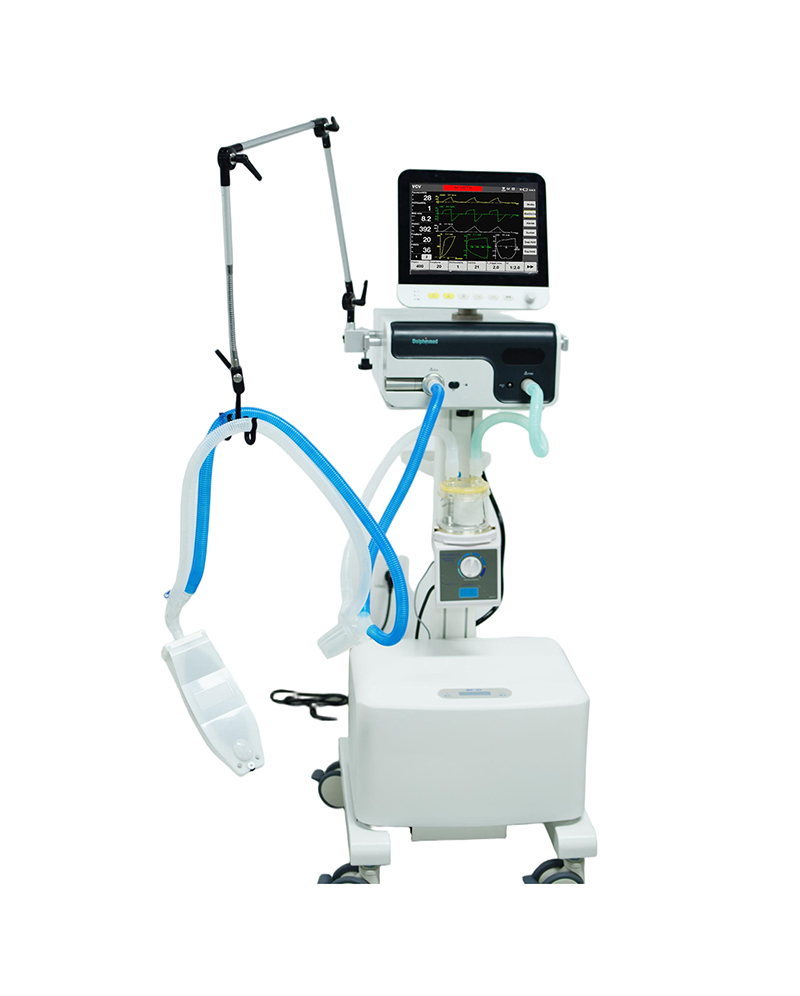
A ventilator is a medical device that assists or replaces the body's spontaneous breathing through mechanical means. It is primarily used to improve oxygen supply, remove
carbon dioxide, and help patients maintain normal respiratory function. Its core role is to support or take over the breathing process, making it suitable for scenarios such as
respiratory failure, post-operative recovery, chronic lung diseases, and sleep apnea syndrome.
Main Functions of Ventilators
▸ Treating Respiratory Failure
When patients experience insufficient spontaneous breathing due to lung diseases (such as pneumonia or COPD), neuromuscular disorders, or trauma, the ventilator delivers
oxygen to the lungs via positive pressure ventilation, helping to expand alveoli and correct hypoxemia and hypercapnia.
▸ Maintaining Ventilation
During anesthesia, after major surgery, or in comatose states, patients may temporarily be unable to breathe spontaneously. The ventilator ensures stable oxygen delivery and
carbon dioxide removal by setting parameters such as tidal volume and respiratory rate, preventing organ damage due to hypoxia.
▸ Improving Sleep Apnea
For obstructive sleep apnea syndrome (OSA), home non-invasive ventilators (e.g., CPAP) use continuous positive airway pressure to prevent upper airway collapse during sleep,
reduce apnea episodes, and improve sleep quality.
▸ Assisting Critically Ill Patients
In intensive care units (ICUs), ventilators can support patients with acute respiratory distress syndrome (ARDS), severe asthma attacks, etc., using modes such as high-frequency
oscillatory ventilation (HFOV) or positive end-expiratory pressure (PEEP) to optimize gas exchange.
How Ventilators Work
▸ Positive Pressure Ventilation: Delivers pressurized gas into the airway via a mask or endotracheal tube to forcibly open alveoli, suitable for patients with weak or absent
spontaneous breathing.
▸ Pressure/Volume Control: Depending on the patient's condition, pressure control (limiting airway pressure) or volume control (ensuring tidal volume) is selected to balance
treatment effectiveness and the risk of lung injury.
▸ Synchronization Trigger: Modern ventilators can detect the patient's spontaneous breathing attempts and provide synchronized assisted ventilation, reducing patient-ventilator
asynchrony and improving comfort.
Target Users and Scenarios
▸ Short-Term Use: Post-operative recovery, acute respiratory failure, drug poisoning, and other situations requiring temporary support.
▸ Long-Term Dependence: Patients with chronic conditions such as ALS (amyotrophic lateral sclerosis) or high spinal cord injuries that lead to respiratory muscle weakness.
▸ Home Treatment: Patients with mild to moderate sleep apnea or stable COPD can use home ventilators to improve their quality of life.